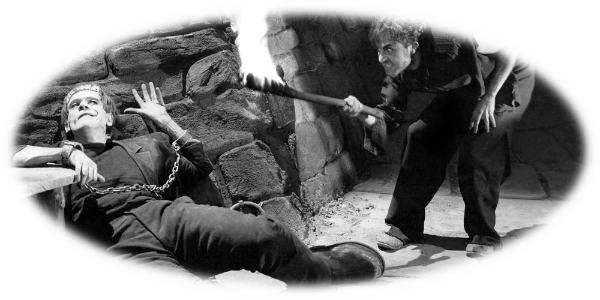

HIS HUMBLE HUNCHBACK: THE STOCK CHARACTER HISTORY OF IGOR
May 13, 2019 | Essays
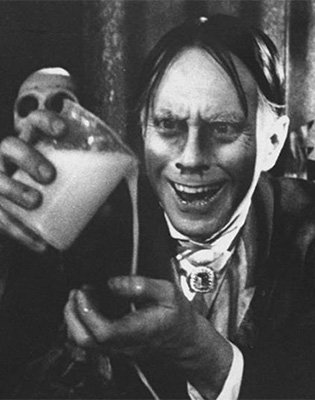
From the very beginning of this essay, I’m sure that any given reader has been eagerly anticipating a certain, very obvious Frankenstein parody from the 70s, one that produced the most iconic "Igor" outside of Dwight Frye’s Fritz. Rest assured, it will come—but before we return to movies, we have to cover two decades of monster madness where "Igor" seemed to be everywhere else but the movies.
As Abbott and Costello took over Universal's monster franchises, the studio began leasing their film library to the ballooning medium of television. Television studios, suddenly inundated with a massive catalog of horror classics, invented the most enduring icon of the 50s fright fad: the television horror host. Horror hosts were the liaisons between the television-watching public and those old scary movies. The phenomenon was wonderfully local; every station in every city seemed to have their own horror host, typically played by a weatherman or other channel personality and invariably a larger-than-life character, ghoulishly costumed or caked in macabre make-up. They played a very similar role on television as the sardonic narrators of comics in Tales from the Crypt or Eerie and Creepy comics did at the time (and on a related note, the print mag Famous Monsters of Filmland mentioned the editor's pet, Igor, in its second issue), introducing and occasionally interrupting their featured programs with commentary, trivia, and parodic sketches. One of the earliest horror hosts was the "cool ghoul" John Zacherle, a.k.a. Zacherley (a.k.a. "Ro-land"), who started on WCAU Philadelphia’s Shock Theater in 1957. Although mostly a solo act, he had two frequent but always unseen co-stars: his wife, who never left her closed casket, and an assistant that Zacherley would often shout to off-screen...an assistant named Igor. Zacherley can be heard reprimanding Igor in his 1958 novelty hit "Dinner With Drac": "Igor! The scalpels go on the left, with the pitchforks!"

"Igor" would appear on another novelty record in 1962, one that's still more familiar today: "The Monster Mash" by Bobby "Boris" Pickett. The song was wildly successful, but it's especially notable here for mentioning "Igor on chains, backed by braying hounds." Although it doesn’t explicitly state that this Igor is a hunchback, the song does begin with a body rising from a slab, and it invites Igor to the same party as famous monsters like Dracula (and his son). Although mentioned only briefly in "Monster Mash," Igor would get an entire song from Pickett on his follow-up album The Original Monster Mash called "Irresistible Igor." Pickett doesn’t draw explicit links between "Irresistible Igor" and Frankenstein, or call him a hunchback, but he does croon about Igor’s body snatching profession and asserts that "in the hall of horrors, he’ll always be the best."

In the same year that the "Monster Mash" haunted audiences, prolific stand-up comedian Jonathan Winters pastiched Frankenstein on his album Another Day, Another World in a sketch called "Igor and the Monster." In the sketch, a "mad" Dr. Fabersham runs an on-demand monster making service and is hired by the University of California to make an 18-foot tall center for their basketball team. Dr. Fabersham is assisted by his wildly snarling assistant Igor. "Igor" wasn’t a one-off topic for Winters in his early years, either; on his debut album in 1960 he included nearly identical characters to Dr. Fabersham and Igor in a sketch sending up horror movies as a whole. In this earlier sketch, the characters were named Dr. Fralich and Krakow (or Brakow) but still had the same voices and mannerisms—the doctor as a Boris Karloff impression and the assistant as a gnashing fiend. Winters’s comedy was wildly popular, and his "Igor" sketches didn’t just further notions of a lab assistant to Dr. Frankenstein, but also suggested that they are animalistic if not entirely feral beings. This portrayal is arguably a caricature of Fritz from 1931’s Frankenstein—Dwight Frye’s energetic, ape-like body movements and vicious behavior could have easily been remembered above all else by audiences thirty years later. And in Winters’s case as a comedian, it just worked because the contrast between a calculating, articulate doctor and a wild, snarling assistant has ample comedic potential.
The inclusion of hunchbacks and "Igors" in the "hall of horrors" of "The Monster Mash" and Universal’s crossover films is significant, because it reiterates and reinforces the suggestion that not only do they deserve to be there, but that they always have been. The most prominent two, of course, were still Fritz and Ygor, but it was Universal’s monster rally films that gave hunchbacks their place at the table, so to speak. Then, operating on knowledge of and nostalgia for a variety of hunchbacks, the comedians of the 50s and 60s christened that archetype Igor. Although no singular "Igor" existed in any film prior to these parodies, by the early 70s at least, the mainstream perception of Frankenstein had shifted to now require an "Igor" just as much as it did a doctor and a monster.
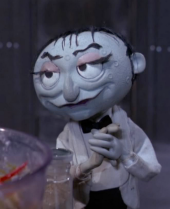
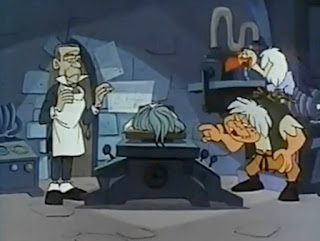
In 1969, Rankin/Bass Productions released the stop-motion Halloween special Mad Monster Party, with Boris Karloff lending his name, voice, and likeness to the character Baron Boris von Frankenstein. In the film, Baron Frankenstein is assisted by a zombie butler named Yetch, a visual and vocal caricature of Peter Lorre (but voiced by actor Allen Swift). The previous part of this essay explained how Peter Lorre came to be associated with the "Igor" archetype; the combination of Karloff as a mad doctor and a Lorre-like as his servant mirrors previous relationships seen in Arsenic and Old Lace and The Boogie Man Will Get You. In 1972, there would be a traditionally animated prequel to Mad Monster Party called Mad Mad Mad Monsters, and although Yetch did not reappear, it would provide another "Igor," this time one actually named Igor. Igor is depicted as a boorish brute, much like Bela Lugosi’s Ygor from Son of Frankenstein. Igor even appears to be modeled in part after Lugosi’s Ygor, sharing his ragged clothes, unkempt mop top, and crooked smile. Igor and Ygor are both treacherous characters, too; in Mad Monsters Igor schemes to steal Baron Frankenstein’s creation for himself. Igor in Mad Monsters, though, unlike Ygor, is explicitly an assistant to Dr. Frankenstein and actually does have a prominent hunchback, making him one of the earliest examples of a fully realized "Igor."
Probably the first live action "Igor" of the early 70s was played by Fishka Rais on The Hilarious House of Frightenstein, a Canadian horror-themed children’s show. It ran for 190 episodes in 1971 and starred entertainer Billy Van as the eponymous Count Frightenstein. Frightenstein, though dressed in vampiric garb and speaking with a mock "Transylvanian accent" like Dracula, bore the (parodied) namesake of Dr. Frankenstein. Rais’s Igor was Frightenstein’s assistant and his personality, though greatly exaggerated for comedic purposes, was perfect for an "Igor": bumbling, cowardly, and absurdly inept but devotedly loyal. Also, though not a hunchback, Rais’s Igor was very visually distinctive due to his cue ball head, bulging eyes, and Groucho Marx-esque facial hair.
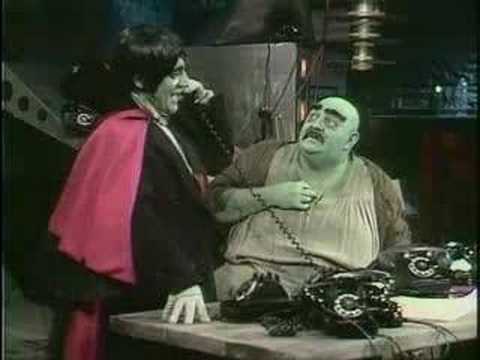
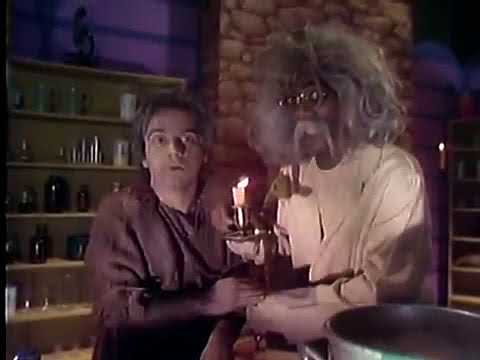
Another "Igor" from this era was on The Electric Company, played by Jim Boyd and later Luis Avalos. This Igor was the servant of a recurring character known only as the Mad Scientist, played by Morgan Freeman (yes, Morgan Freeman). This incarnation, though prominently hunchbacked and bug-eyed, was harmless and much more goofy than menacing, and bore much more physical resemblance to Dwight Frye’s Fritz than Lugosi’s Ygor. Both Boyd and Avalos played the role with a thick Peter Lorre impression, like Yetch from Mad Monster Party. This "Igor" is also an early parodic example of the archetype referring to who they assist as "master," harkening back to Dwight Frye as Renfield in Dracula.
Having been 40 years since the Universal classic that started it all, audiences had had two generations to consume Frankenstein media. Those that had grown up with it and also been exposed to the parodies of the 50s and 60s were now producing Frankenstein media of their own. The emerging class of filmmakers would be able to reinvent and reinterpret, condense and combine, and sift and select elements from the original book, the Universal movies, and the ensuing parodies that they considered significant. All of these early 70s incarnations of "Igor"—from Frightenstein to Mad Monsters and The Electric Company—perpetuated different aspects of the archetype and furthered its presence in popular culture. However, there was still no fully realized "Igor"—a hunchbacked assistant to Dr. Frankenstein—in a feature Frankenstein film...until 1974.